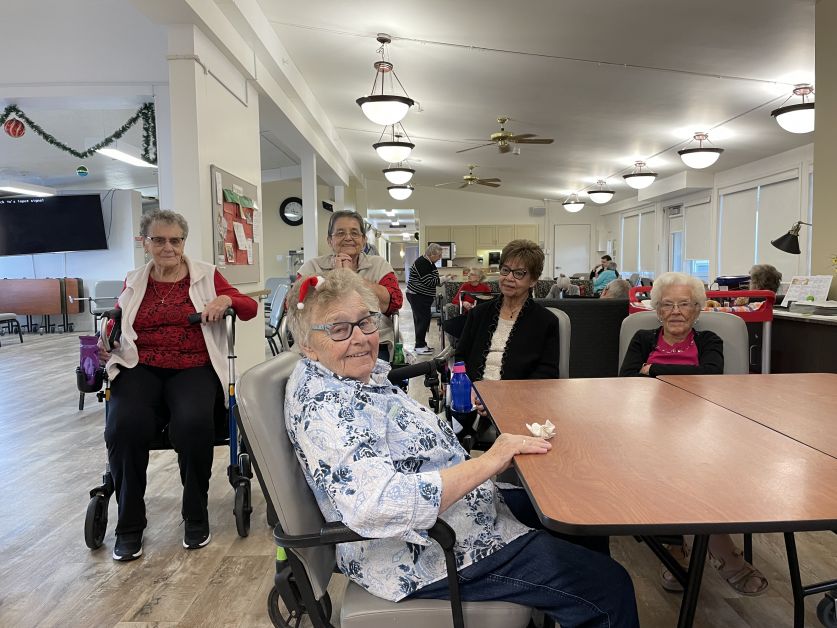
With Christmas around the corner, the holidays stir up some memories of Christmas past. Often these are fond memories. The Mail took a moment to sit down at the Sunshine Lodge and learn what Christmas was like just a couple of generations ago.
Maxine Popovich grew up in Saskatchewan and didn’t come to Alberta until she was 7. She was a teen when the family settled in East Coulee. She said these were the best years of her life.
“We always had our Christmas Day at home with family. We only had our immediate family because we had no relatives here,” she said.
After she was married they would celebrate at her in-law’s home.
“We lived right next door to them so we were with them all the time,” said Popovich. “It was a blessing for me because my mother-in-law was an absolute angel.”
Darlene Martin grew up in Southern Saskatchewan. She remembers Christmas concerts at the school and remembers the boiler was always going to keep them warm on a frosty December night.
“And you had to climb over the snowbanks if you had to go to the bathroom, some left a little trail,” she laughs.
She remembered they would have a little play as well as carol singing at the concert. She admits she wasn’t the best singer.
“I would lip-sync or whatever they called it,” she said.
On Christmas Day the kids would entertain themselves with games and sleigh riding. But there was always a big meal. That included cuisine from all corners of the world.
‘We’d have perogies, cabbage rolls, and turkey, stuffed with goose sometimes,” said Darlene. “I remember one time my uncle, it was his turn to make the turkey and goose and he was a big talker. We were invited there, he put the turkey in the oven and he didn’t turn it on. It was a catastrophe!”
They agreed that Christmas has changed over the years, as one participant quipped, “When I was a kid, you only saw one Santa Claus. That was at the school after the concert, you would see Santa Claus. Now you see Santa on every street corner, and they start in November!”



















